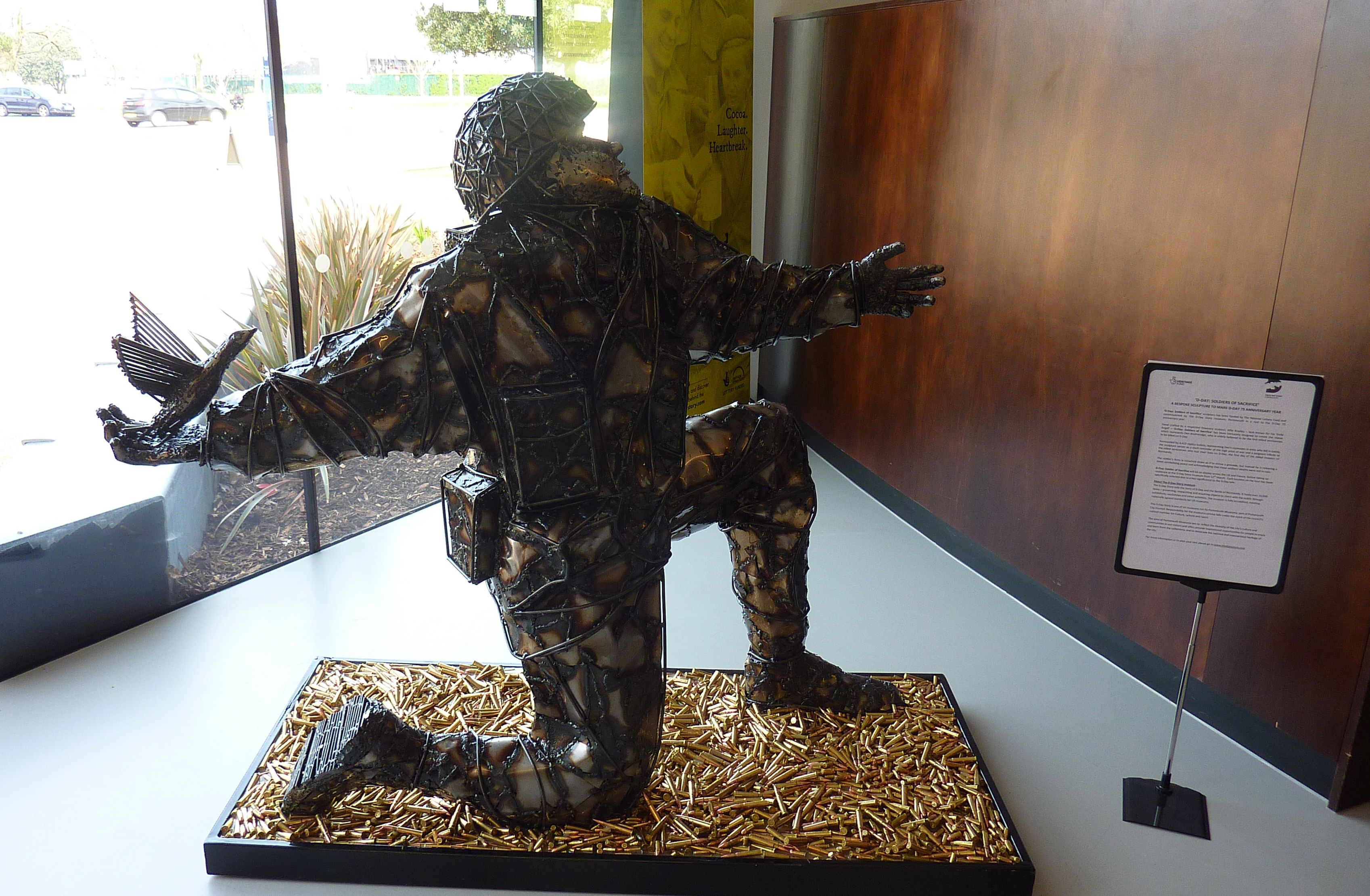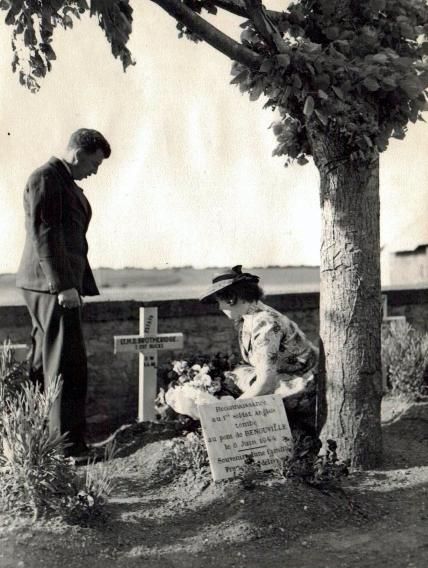Den Brotheridge was born in Smethwick, Staffordshire, the son of Herbert Charles and Lilian Brotheridge. Before going to Normandy, he was married to Margaret who was 8 months pregnant when he left. He was talked into D Company in an early stadium by Major Howard himself who considered him to be a friend. They both had a similar social background and a keen interest in sports. They were sometimes targets for public school educated British officers, but were to gain their respect as a consequence of their proficiency in military matters.
Brotheridge came to command 25 Platoon (also known as first platoon) in Major John Howard's 'D' Company, Oxfordshire and Buckinghamshire Light Infantry, 6th Airborne Division, and led the first charge across the bridge at Benouville, now known as Pegasus Bridge during the nocturnal coup-de-main-action. He managed to silence the left German MP-post at the western bank of the Caen Canal, but was hit with a shot in the back of the neck and died of wounds in the early hours of 6 June aged 26 in a Casualty Collection Post situated in a trench between the Caen Canal- and Orne-bridges, where Captain John Vaughan RAMC took care of him. Lt. Herbert Denham Brotheridge is buried in the War Cemetery in Ranville Churchyard near Caen in France.[1] Ranville was the first village in France to be liberated.
Den Brotheridge was born in Smethwick, Staffordshire, the son of Herbert Charles and Lilian Brotheridge. Before going to Normandy, he was married to Margaret who was 8 months pregnant when he left. He was talked into D Company in an early stadium by Major Howard himself who considered him to be a friend. They both had a similar social background and a keen interest in sports. They were sometimes targets for public school educated British officers, but were to gain their respect as a consequence of their proficiency in military matters.
Brotheridge came to command 25 Platoon (also known as first platoon) in Major John Howard's 'D' Company, Oxfordshire and Buckinghamshire Light Infantry, 6th Airborne Division, and led the first charge across the bridge at Benouville, now known as Pegasus Bridge during the nocturnal coup-de-main-action. He managed to silence the left German MP-post at the western bank of the Caen Canal, but was hit with a shot in the back of the neck and died of wounds in the early hours of 6 June aged 26 in a Casualty Collection Post situated in a trench between the Caen Canal- and Orne-bridges, where Captain John Vaughan RAMC took care of him. Lt. Herbert Denham Brotheridge is buried in the War Cemetery in Ranville Churchyard near Caen in France.[1] Ranville was the first village in France to be liberated.
Bio by: Roy Webb
Inscription
LIEUTENANT
H.D.BROTHERIDGE
THE OXFORDSHIRE AND
BUCKINGHAMSHIRE LIGHT INF.
AIRBORNE
6TH JUNE 1944 AGE 29
OUT OF THE BITTERNESS OF WAR HE FOUND THE PERFECT PEACE
Gravesite Details
This is a military grave. Inscription is illegible."

















